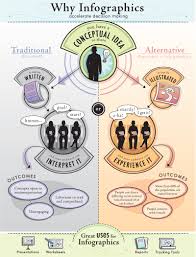Marketing Agency Lets Retailers Know How Their Customers Feel
As more and more shoppers head out to beat the holiday rush to get discounts on ‘the world’s greatest gifts’ for those on their shopping lists, Black Friday sales continue to increase each year. This, in itself, may not seem like news until you look at where this is happening. What IS surprising is that this sales juggernaut is not just taking place in the United States anymore. Rather, Black Friday is now becoming an accepted, highly effective sales tool for retailers throughout Canada.
An over-simplified distinction between the U.S. and Canada is that while Americans tend to adopt Canuck ideas, and, even people, Canadians are more likely to adapt an idea from elsewhere by making slight alterations…thus making it somewhat unique in their own way. Case in point, Black Friday, which started off as a holiday sales event tied-into the U.S. Thanksgiving, is now becoming a part of the Canadian sales culture—despite the fact that Canada’s Thanksgiving Day takes place almost six weeks earlier.
“As recently as just two years ago, there were probably only a few dozen early-adopter businesses participating in Black Friday marketing in this country. This year, however, we expect almost a majority of retailers to participate based on last years’ observation and the abundance of TV, radio, print and online advertising we’ve been seeing this past week,” said Andrew Sharpe, founder of Vancouver-based marketing agency Brandspank.
And while retail sales on Black Friday in Canada have increased, the sales have not been restricted to traditional advertisers, like retailers. In fact, retailer marketing agency Brandspank has leveraged the idea of a Black Friday sale by adapting it into a B2B promotion. The result is #BrandspankFRIDAY and it’s targeted squarely on retailers; the promotion provides them with a chance to save up to 40% off the agency’s most popular marketing services—including websites or experiential campaigns. It literally reverses the roles for retailers by allowing them to experience what their own customers usually experience—deep discounted savings.
To promote the event, Brandspank is employing some marketing techniques that retailers are quite familiar with—including an eCommerce site (http://bit.ly/1950neN), flyers (http://bit.ly/1aSYsxL), relationship marketing and online advertising…not to mention posters in the storefront windows of their boutique office located in a shopping mall.
As a marketing agency, Sharpe and his team were very familiar with the toll Black Friday can put on a retail organization, as well as the heightened stress that is experienced by the marketers within those retail organizations. And it is for this reason that Brandspank felt that retailers deserved a little bit of retail therapy themselves.
“Most retailers are usually on the giving end of a Black Friday sale. So we wanted to give these retailers a chance to experience the same sense of satisfaction and excitement that their own customers experience during their own sales.” Sharpe went on to say, “Given the success that our retail clients have had with Black Friday, we felt it was only fitting for us, a retail marketing agency, to create an entire promotion featuring the lowest prices of the year on our most popular services…for a limited time, of course.”
With the invasion of Black Friday into the Great White North, and it now being embraced by non-traditional service providers, it appears that in the coming years this particular time of the year could even surpass Boxing Week as Canada’s premiere sales period.
About BRANDSPANK
Brandspank is a user-experience marketing agency specializing in the retail sector. They combine shopper marketing with storytelling to help retailers to make their brands more engaging—both in-store and online. Staying true to their retailer-focused niche, Brandspank has created a working boutique at the front of their offices—located in a shopping mall. For more information about Brandspank, call 604-608-0880 or visit www.brandspank.net











 (2/4)The Washington County Sheriff’s Office has provided
(2/4)The Washington County Sheriff’s Office has provided  (3/4)The Washington County Sheriff’s Office has provided KOIN-TV with this photo from a crime scene where deputies said the co-founder of Dave’s Killer Bread damaged three vehicle after a vehicle pursuit (Nov. 15, 2013)
(3/4)The Washington County Sheriff’s Office has provided KOIN-TV with this photo from a crime scene where deputies said the co-founder of Dave’s Killer Bread damaged three vehicle after a vehicle pursuit (Nov. 15, 2013) (4/4)The Washington County Sheriff’s Office has provided KOIN-TV with this photo from a crime scene where deputies said the co-founder of Dave’s Killer Bread damaged three vehicle after a vehicle pursuit (Nov. 15, 2013)
(4/4)The Washington County Sheriff’s Office has provided KOIN-TV with this photo from a crime scene where deputies said the co-founder of Dave’s Killer Bread damaged three vehicle after a vehicle pursuit (Nov. 15, 2013)